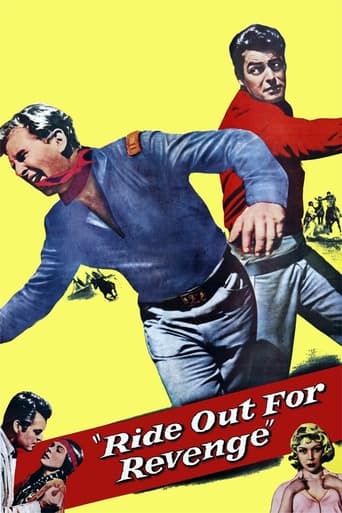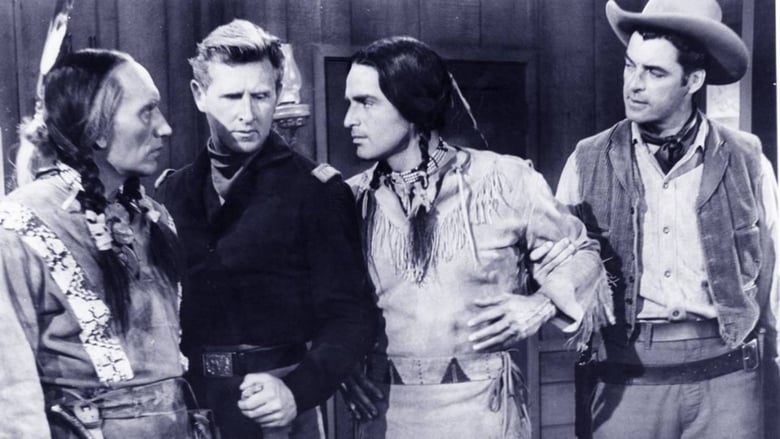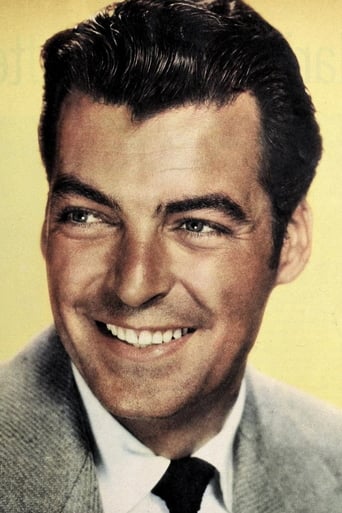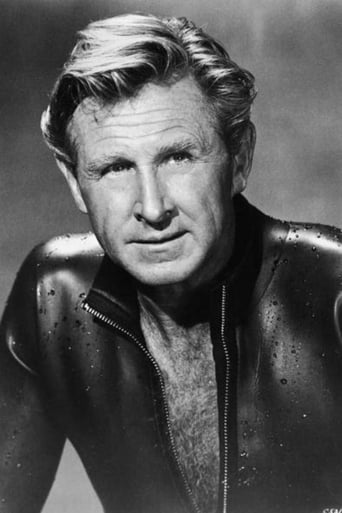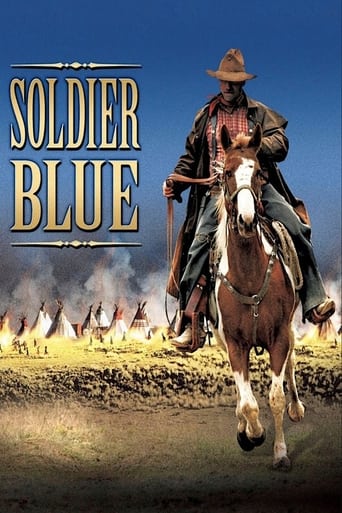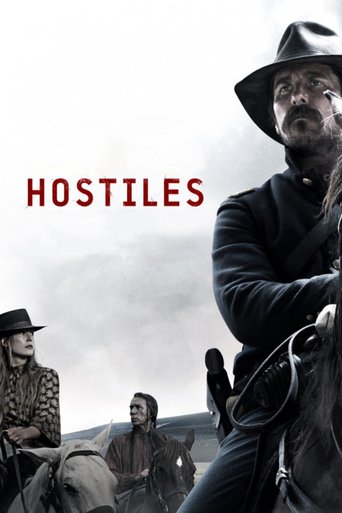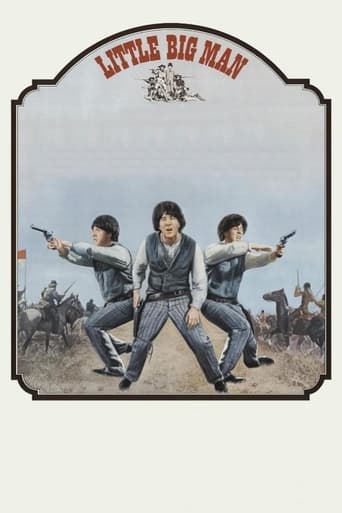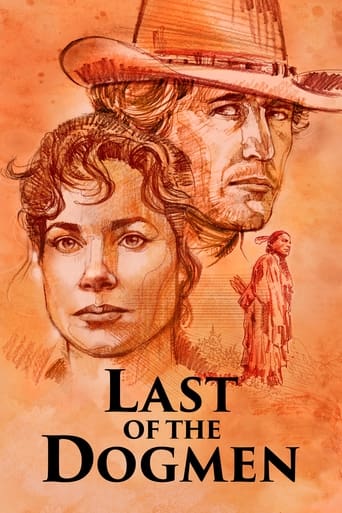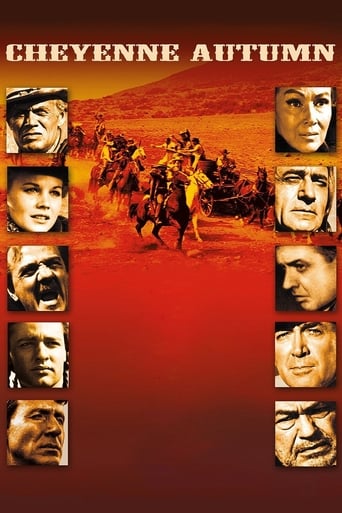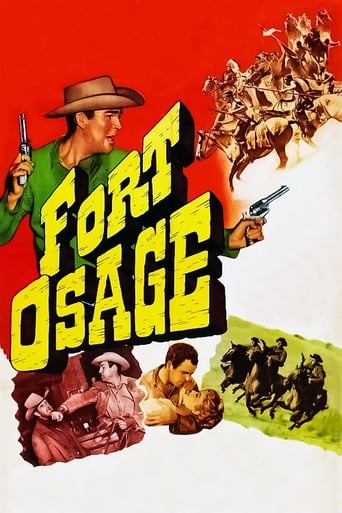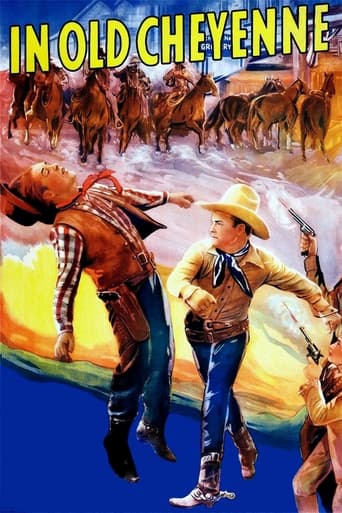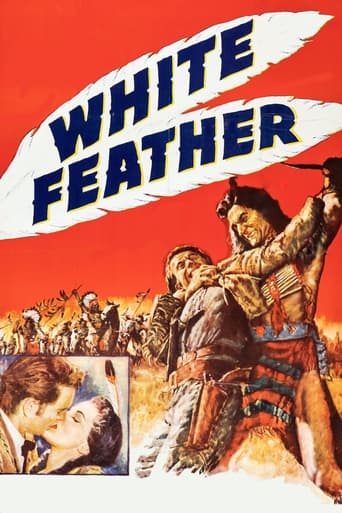Ride Out for Revenge (1957)
When an Indian chief is murdered in a hateful town, a sympathizing ex marshal tries to stop the Indians from attacking for revenge.
Watch Trailer
Cast


Similar titles
Reviews
Simply A Masterpiece
It was OK. I don't see why everyone loves it so much. It wasn't very smart or deep or well-directed.
The film makes a home in your brain and the only cure is to see it again.
This is one of the best movies I’ve seen in a very long time. You have to go and see this on the big screen.
This is essentially the story of 3 men: Captain George(Lloyd Bridges), Chief Little Wolf(Vince Edwards), and Tate(Roy Calhoun). Captain George, a cavalry officer with seemingly only a handful of men to command, charged with keeping the peace in this frontier area, actually foments trouble by ordering the killing of Cheyenne Chief Yellow Wolf when he came to town asking for essential supplies to survive the coming winter. The chief didn't understand that Cpt. George had no authority to issue such supplies, since they were not on a reservation. Yellow Wolf had favored peaceful coexistence with the white settlers, whereas his son, Little Wolf, who succeeded him, talked of stealing the needed supplies from the army depot, and against going to the reservation in Oklahoma, which Cpt. George had received orders to facilitate. An additional reason for wanting the Cheyenne gone was that Yellow Wolf had brought a sample of gold-bearing rock from near the Cheyenne camp to show to Cpt. George, hoping to use it as a bargaining chip. Opposing the goals of both Cpt. George(and the army) and Little Wolf was ex-Indian fighter, Sheriff Tate. He wants peace and the status quo returned. But, the town's people interpret his stance as pro-Cheyenne. Many of them, including Tate. have lost loved ones to Indian murder, hence are not willing to tolerate Tate's position. Also, they know his girlfriend is the sister of Little Wolf, which they believe colors his stance. Thus, a town council recommends that they find a new sheriff. Even the death of his adopted son at the hands of the Cheyenne doesn't dissuade him from the relatively pro Cheyenne stance. At this point, Cpt. George wants both Tate and Little Wolf dead. Tate feels he must kill Little Wolf to prevent an attack on the town. Yet, when he has a chance to shoot him, he cannot. Pretty Willow(Joanne Gilbert)arranges for Tate to meet Little Wolf, out between the town and village. Somehow, Cpt. George receives this information, so plots to kill the two together, if they haven't already killed each other. Tate and Little Wolf knife fight each other, eventually falling into a lake. At this point, Cpt. George arrives, and shoots into the water, apparently killing Tate, while Little Wolf comes to shore. I will stop here, and let you find out the conclusion by seeing the film.Tate, if he lives, has the choice of 2 beautiful women, who are in love with him. One is European: Amy(Gloria Grahame), his landlady, who is very anti-Cheyenne, since they killed her husband and she sees them as greatly inferior culturally. The other is Pretty Willow, whom he favors. I think this union symbolizes a take-home message that interracial marriages should be considered OK, even if they often impose extra burdens and incompatibilities on the couple. However, personally, I think I would have chosen Amy, Tate's age mate, who easily expressed her emotions. In contrast, the much younger Pretty Willow seldom expressed her emotions by her face or words. Even the death of her father, brother, and apparently Tate didn't excite any crying, wailing, etc.. She just clamed up.I found several historical curiosities that relate to this film. The white town was given the fictional name of Sand Creek. Well, the infamous massacre of Cheyenne(mostly women and children) camped at Sand Creek, Colorado, created a stir among bipartisan whites, in it's day. Little Wolf was the name of a northern Cheyenne chief, who famously led a group of Cheyenne from the Oklahoma reservation to Montana, despite harassment by the army(see "Cheyenne Autumn") However, Yellow Wolf was the name of a Comanche, not Cheyenne, chief.See it at You Tube.
More sensitive to the feelings of the Indian people than other films of the time, the watchable B Western "Ride Out for Revenge" has some good performances and a decent story to recommend it, even if it's heavy handed in pushing its message home and ultimately forgettable. It does take the viewer out of the movie to see obviously white people playing Indian characters, but then Hollywood still wasn't ready in 1957 to be truly politically correct.The stolid Rory Calhoun plays Tate, a marshal from the small town of Sand Creek who's sympathetic towards the local Cheyenne tribe. Of course, helping him to form that opinion is his love for Pretty Willow (Joanne Gilbert), the daughter of the tribes' chief Yellow Wolf (Frank DeKova). When the chief is cold bloodedly murdered by a gunman, it angers the chiefs' son Little Wolf (Vince Edwards) who leads his people in a raid. Even after suffering a personal loss during the raid, Tate finds that taking care of business is still a tough proposition.Calhoun is fine, Edwards amusing even in light of his miscasting, and Gloria Grahame makes the most of her not terribly important role. But the movie really belongs to a wonderful Lloyd Bridges, who's perfectly slimy as a racist, greedy, cowardly Cavalry officer. It's Bridges who keeps things interesting for the duration; surely a member of the Cavalry had never been portrayed in this negative a light before. Otherwise, nothing about this is anything special - not the direction (by Bernard Girard) nor the script (by producer Norman Retchin, based on a novel by Burt Arthur), although the music (by Leith Stevens) and cinematography (by Floyd Crosby) are nice.Overall, not a bad way to spend 78 minutes.Six out of 10.
A sheriff battles his gold hungry town and a cavalry captain who covet gold-rich Indian land.The movie's pretty unremarkable except for the cowardly cavalry captain (Bridges). Cavalry officers were generally not portrayed in such a negative light. But here Bridges tries hard, if not very persuasively, to be as craven as possible. The film came along at a time when Hollywood was beginning to recognize the Indians' side of the struggle over land. Thus their side gets a fairer treatment than had been usual. Calhoun plays an Indian sympathizer who tries to control the more bloodthirsty whites in the town. And, of course, he has an eye for the comely Indian maiden (Gilbert), who happens to look a lot whiter than he does. But then Hollywood never cast real Indian women as major romantic interests, even though they might use real Native Americans in all the other parts.I'm not sure why cult actress Grahame is in the film since her part appears inessential. I guess it was for marquee value, though her best years are clearly past. On the whole, it's a rather dull western, without the expected big shootouts, but with a lot of talk instead. Its heart is in the right place, but not much else, I'm sorry to say.
Lloyd Bridges shines as a cowardly calvary captain while actor, Vince Edwards, looks terribly miscast as an Indian in this Bryna Film Production. Bryna Productions was the company that was formed by actor, Kirk Douglas, that produced such films as "Spartacus", "Last Train From Gun Hill", "Paths of Glory", etc. I suspect this film was shot around the time that "Last Train From Gun Hill" was shot as some of the scenery where Rory Calhoun (Tate) has a confrontation with Vince Edwards (Chief Little Wolf) appears to be the same area where Earl Holliman rapes and kills Kirk Douglas wife in "Last Train From Gun Hill". What "Last Train From Gun Hill" has that this film doesn't have is a good script, a solid plot and beautiful Technicolor. "Ride Out For Revenge" is an interesting and entertaining film in so far as it points out the many wrongs that the "white man" has inflicted on the Indians as well as the hatred that has been sowed over the years through the losses of life from both sides. The plot puts Tate (Rory Calhoun) who loves an Indian princess (Joanne Gilbert) in the middle of an Indian vs "white man" confrontation. Now add the fact, that gold is found on the Indians land. Throw in a cowardly captain (Bridges) who hates Indians but would love to have their land and their gold. Sprinkle a widow (Gloria Graham) and a child (Michael Winkleman) that have both lost spouse and father by Indian massacre. Add a touch of vengeful Indian (Vince Edwards) whose father has been murdered by the town's people .... and you have all the ingredients for what is to come. The film, in my opinion, is at best a mediocre western with a very important but "preachy" message. What I found most interesting and important was the morale of the film which can be found is some of the final dialog of the film. Pretty Willow (Joanne Gilbert) says "If everything changes ... what will happen when someone comes to take the land from the "white man" and Tate (Rory Calhoun) responds "I don't know I never gave it much thought."

